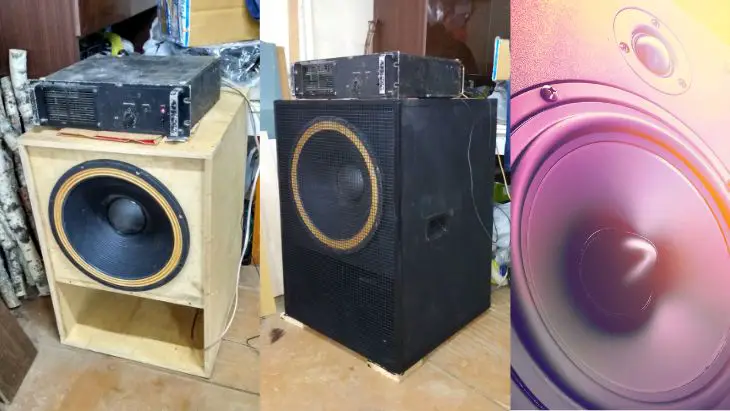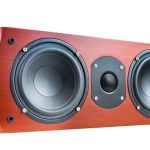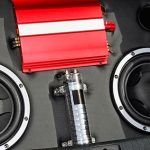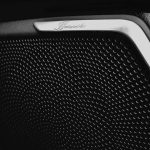The human ear hears sound range of a frequency between 20 to 20,000 Hz. Basically, music comprises of different frequency ranges. A subwoofer is a special type of speaker that is specifically designed to reproduce the lowest frequencies. Low frequencies are what is normally known as bass. While all subwoofers are designed to reproduce bass, they’re not built the same. There’re certain features and factors that make one subwoofer sound better than the other. If you want the best quality bass from a subwoofer, then you should know what to lookout for. Moreover, you might want a subwoofer with loud bass while someone else may want a subwoofer with tight bass. Thus, what you find as the best might not be the best for someone else. Nevertheless, here’s what makes a subwoofer good:
Passive vs Powered
Subwoofers are either passive or powered. To start with, passive subwoofers require an external power supply like regular speakers. Thus, you’ll need an external amplifier to drive a passive subwoofer. For a passive subwoofer to sound best, you’ll need to connect the external amplifier to preamp outputs of a receiver. Preamp outputs are specially designed to output audio signals that are clean for amplification, thereby delivering higher quality sound.
Since subwoofers demand a lot of power to reproduce bass, connecting a passive sub to the receiver outputs won’t feed it with the much need power. Most receivers are low powered and don’t output the much-needed power to drive a sub. Thus, an external amp is needed to feed a passive sub with the power it needs. The power rating of the amp you choose should be enough to drive the sub depending on the level of bass you need and the power rating of the sub itself.
On the other hand, a powered subwoofer is a type of sub that comes with an inbuilt amplifier. As such, it doesn’t rely on an external power source. What this means is that you can connect a powered sub directly to preamp outputs of a receiver and get the best sound. As such, you can leave the external amplifier to power other speakers and tweeters. However, you’ll need to connect a powered subwoofer to an AC or DC power source depending on its power specifications. Powered subs are the most commonly used subs due to their ease of setup. Moreover, most powered subs come with their own volume and gain controls such that you can use their own controls separate from those of a receiver.
When choosing between a passive and a powered subwoofer, consider your needs. If you need more customization, a passive sub will be the best option. However, if you need an easy setup, then use a powered subwoofer.
Frequency Response
While all subwoofers reproduce low frequencies, each subwoofer supports a certain frequency range. Since the human ear has the ability to hear frequency range from 20 to 20,000 Hz, the best subwoofer is the one that can hit the lowest frequencies. With 20 Hz being the lowest frequency that is audible to the human ear, then consider a subwoofer that can hit the lowest frequency above 20 Hz. However, subwoofers that hit the lowest frequencies are quite expensive. Most subwoofers have a frequency range of 100 to 200 Hz, which is decent enough for regular bass needs. If you need a subwoofer for professional live sound or for extremely deep bass, then consider a subwoofer that can hit frequencies below 100 Hz.
Subwoofer Crossover
A crossover is an equipment used in limiting the frequency range of audio signals that gets to a speaker. Crossovers usually have a low pass filter and a high pass filter. Subwoofers usually rely on a low pass filter. The role of a low pass filter is to filter out and block high-frequency signals and allow low-frequencies to pass through. Thus, it ensures that a subwoofer only reproduces low frequencies for the best bass. It’s recommended to set the low pass filter to 10 Hz above the lowest frequency it can support. However, if you don’t know the frequency range of your subwoofer, the rule of the thumb is to set the low pass filter to 100 Hz.
Power Rating and Sensitivity
The power rating of a subwoofer matters a lot when it comes to the kind of bass it will deliver. Basically, if you need the deepest and loudest bass, then you should invest in a speaker with a higher power rating. The power rating is given in both RMS power and peak power. The most important rating is the RMS power rating. RMS power rating gives the most realistic measure about the power handling ability of a subwoofer. Peak power is only used to determine short time power surges that a sub can handle whereas RMS rating is a continuous power rating.
The sensitivity of the subwoofer also matters. Basically, the sensitivity of a subwoofer determines the amount of power it demands from an amp or receiver. A higher sensitivity rating means that the subwoofer demands less power from an amp or receiver whereas a lower sensitivity rating means that the sub demands more power. Here, your choice should depend on how powerful your receiver or amp is. If your amp or receiver has a low power rating, then invest in a sub that has a high sensitivity rating. If your receiver or amp has a high power rating, then you can go for a sub of any sensitivity rating, be it low or high. Thus, you only have to worry if your amp or receiver has a low power rating.
Down-Firing or Front-Faring
The driver that comes with a subwoofer is mounted in either a down-firing or front-firing position. In a down-firing position, the driver is mounted in such a manner that bass is directed downwards, that is onto the floor. With a front-firing subwoofer, the driver is mounted in such a manner that bass is directed towards the side or towards the front. These two options perform the same way, only that they direct bass in different directions. Here, what matters more is where you would want to position the sub. Basically, a down-firing sub is best placed at the side wall or at a corner. On the other hand, a front-firing sub is best placed at the front of a room.
Type of Subwoofer Box

The quality of bass you’ll get from a subwoofer will also depend on the kind of subwoofer box. You can only get optimum bass reproduction by having a tight and strongly constructed sub box. If you invest in a subwoofer without adding a sub box, then you won’t get much bass. What happens with a sub that doesn’t have a box is that the bass from the front cancels out with bass from the back of the driver. Using a sub box allows for tighter and louder bass.
When choosing a sub box, choose between a ported and a sealed sub box. Ported boxes have a vent known as a port that reinforces bass reproduction. Ported boxes are ideal for anyone who needs deep and loud bass response. On the other hand, sealed sub boxes are made to be airtight without any opening. Sealed boxes are ideal for accurate and tight bass, but they make a sub demand more power from the amp than a sub in ported boxes.
Size of the Driver
The size of the subwoofer driver matters a lot when it comes to how loud and deep the bass might be. While it’s not guaranteed that the biggest subwoofer driver will sound the best, size does matter. A larger driver that is built in a decent subwoofer box and made with the best components will definitely sound better than a smaller driver. Basically, most subwoofer drivers range from 8 inches to 12 inches in diameter. While you may get a smaller or larger one, this size range is the most common one.
Low frequencies tend to have long waves. As such, the driver works extremely hard to reproduce audible waves. Thus, a larger driver will work less hard to reproduce louder bass than a smaller driver. As such, a subwoofer demands more power than a regular speaker. On a similar note, the power rating matters more than the size. If you need a really powerful subwoofer, then it should be the biggest with the highest power rating and the best enclosure. If it’s big without a high power rating, then a smaller and more subwoofer would sound better. Also, the kind of space you have will determine the size of the subwoofer you choose. If you’re working with limited space, then choose a smaller sub. If space is not an issue, then any size will do.
Placement
Once you’ve considered all other factors, where you’ll finally position your subwoofer will also matter on the kind of bass quality you’ll get. While a powerful sub can sound good when placed almost anywhere, it can only sound best when placed at a more ideal listening position. For instance, placing a sub against the wall may impact negatively on its overall frequency response. The best placement is slightly away from corners and walls, but not at the center of a room. Simply place it at the front of the room but not against the wall. You can also try placing it at different listening positions until where you hear the most natural and consistent bass.
In Conclusion
The idea of what makes a subwoofer good is a subwoofer that recreates low frequencies accurately. A good subwoofer is the one that delivers strong, quality bass, and not just booming bass. A good subwoofer is not only about more bass but the fidelity of bass response. The more realistic a subwoofer sounds, the better it is. As you can see from this article, getting quality bass from a subwoofer is a combination of many factors and not a single factor alone. Thus, keep all these guidelines in mind when shopping for your new subwoofer.
Michael Evanchuk is a San Francisco-based sound engineer with 20 years’ experience installing, troubleshooting, and repairing commercial, automotive, and household sound equipment. Evanchuk owns an auto stereo center, where he offers highly competitive car audio installation and repair services. He has written dozens of articles on different sound engineering topics, all of which have been published in leading journals, blogs, and websites.





